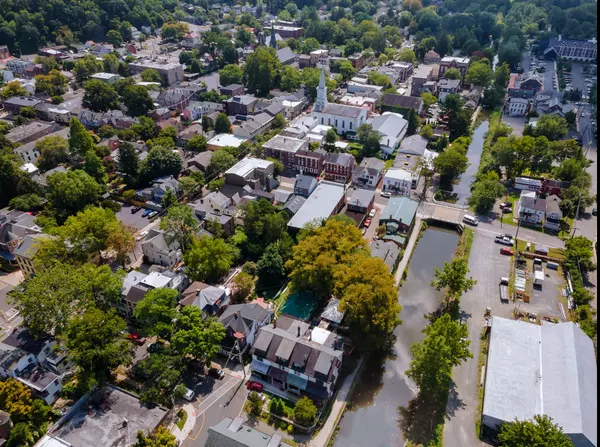Sussex County's Residential Market Enters Critical Transition Phase

The tectonic plates of Sussex County's housing market are shifting, and for institutional investors attuned to distress signals, the September 2025 data reveals an accelerating transformation that demands immediate attention.
The Numbers Tell a Story of Divergence
Sussex County's residential market posted 214 contract sales in September, marking a stark 10.0% year-over-year decline from 239 contracts in September 2024. Year-to-date performance amplifies this weakness, with total contracts down to 1,879 from 1,959 in the prior year—a 4.1% erosion that outpaces broader state trends.
But here's where it gets interesting for opportunistic capital: unsold inventory has surged 14.3% year-over-year to 479 homes, pushing months of supply from 2.1 to 2.2. While these numbers might seem modest to the untrained eye, they represent the early innings of a market recalibration that savvy investors have been anticipating.
My thoughts:
Sussex County doesn’t need a major downturn to reset it only needs a few quarters of imbalance, and we’re already seeing that in the numbers. When inventory rises even modestly in this county, it carries an outsized impact because buyer velocity is thinner and absorption is more seasonal than in urban or suburban corridors.That’s why these early 14% inventory jumps matter: they’re not noise, they're the first tremors of a localized correction cycle. The market’s stability here depends less on macro rates and more on psychology; once sellers perceive the plateau, pricing softens fast. For institutional capital, this is the moment to start underwriting off-market or pre-distress inventory before supply normalization becomes headline data by mid-2026.
Municipal Pressure Points Reveal Hidden Opportunities
The granular data exposes fascinating municipal disparities. Vernon Township leads with 141 active listings—nearly 30% of county inventory—while posting a concerning 72% demand ratio. This inventory concentration in specific townships creates asymmetric opportunities for targeted acquisition strategies.
Meanwhile, smaller municipalities like Andover and Franklin Borough show inventory spikes of 40%+ year-over-year, yet maintain relatively stable demand ratios. This divergence between inventory growth and sustained buyer interest suggests pricing disconnects that institutional buyers can exploit.
Price Segmentation: Where Distress Lives
The sub-$400,000 segment—Sussex County's traditional entry-level market—experienced an 11% contraction in sales volume year-to-date. This isn't just a statistic; it's a distress indicator flashing amber. When entry-level buyers retreat, it typically presages broader market softening as move-up chains break down.
Simultaneously, the luxury segment above $2.5 million posted a 23% gain, highlighting the K-shaped recovery narrative. This bifurcation creates a unique arbitrage opportunity: distressed inventory accumulation at the lower tiers while luxury holds firm.
The Distress Pipeline Builds Momentum
September's 74% demand ratio—down from 79% last year—signals weakening absorption capacity. Combined with the 46% inventory surge since January 2025 (from 12,000 to 17,500 homes statewide), Sussex County's relative underperformance positions it as ground zero for emerging distress opportunities.
My thoughts:
This setup feels eerily similar to 2019’s early warning stage when market participants mistook stability for safety and institutional buyers quietly began accumulating underperforming assets. Vernon’s inventory dominance and Andover and Franklin’s mismatched pricing resilience reveal where smart money should already be looking.The disconnect between inventory growth and buyer retention isn’t a red flag it’s a buy signal for capital that knows how to hold through a six- to twelve-month normalization window. The sub-$400K tier is where distress will mature first, not from panic selling, but from gradual liquidity erosion. In that lag, bulk and note buyers can secure assets at discounts before the broader market adjusts to new valuations.
This cycle won’t mirror 2008 it’s slower, more surgical, and it will reward investors who move early while the headlines still read “stable.”
Municipal data reveals concentrated stress points: Hardyston Township's months of supply stretched to 2.8, while Montague hit 3.8 months—approaching the 4-month threshold that typically triggers motivated seller behavior. These pockets of weakness offer institutional buyers surgical entry points before broader market recognition.
Investment Thesis: Position for the Turn
The Fed's pivot to lower rates—already manifesting in the 30-year mortgage decline from 7.79% to 6.3%—hasn't yet stimulated Sussex County's market. This lag creates a window of opportunity. As Jeffrey Otteau notes in the report, "interest rates are likely to continue to fall through 2026," setting up a compelling risk-reward scenario.
For institutional capital, the playbook writes itself:
- Target municipalities with 3+ months supply for immediate opportunities
- Focus on sub-$400K inventory where distress concentrates
- Build positions before rate declines reignite demand in 2026
The 1.8% annual price appreciation—down from double digits—suggests the froth has evaporated, creating more sustainable entry valuations.
Bottom Line: The Smart Money Moves Now
Sussex County's market transition from seller's to balanced territory is accelerating. With unemployment creeping higher, inventory building, and demand softening, the distress opportunities institutional investors have been waiting for are materializing—but they won't announce themselves with fanfare.
The window for opportunistic acquisition typically spans 12-18 months during these transitions. Given the Fed's rate trajectory and Sussex's lagging recovery relative to urban counties, investors willing to move decisively in Q4 2025 and Q1 2026 should capture the most attractive risk-adjusted returns before the market finds its new equilibrium.
My thoughts:
This is exactly the inflection point where patient capital separates from passive capital. The Fed’s pivot isn’t just macro noise it’s the spark that will reprice risk across local markets like Sussex that always trail metro recoveries by two quarters.The smart money isn’t waiting for confirmation, it’s underwriting right now focusing on 3+ month supply pockets and sub-$400K assets where sentiment, not fundamentals, is driving discounts. These are cycle-entry valuations, not distressed write-downs.
The lesson from past cycles is clear: when liquidity returns, it returns fast and those positioned before the herd don’t chase yield, they own it. For institutional investors with dry powder, Q4 2025 through Q2 2026 is the window to quietly accumulate, stabilize, and ride the recovery curve from the bottom up.
For asset managers and hedge funds seeking New Jersey exposure, Sussex County now offers that rare combination: emerging distress, manageable scale, and clear catalysts for recovery. The only question is whether you'll recognize the opportunity before the market does.
Categories
Recent Posts






GET MORE INFORMATION

